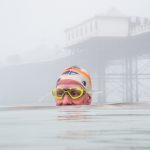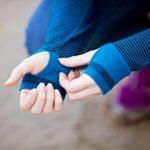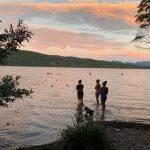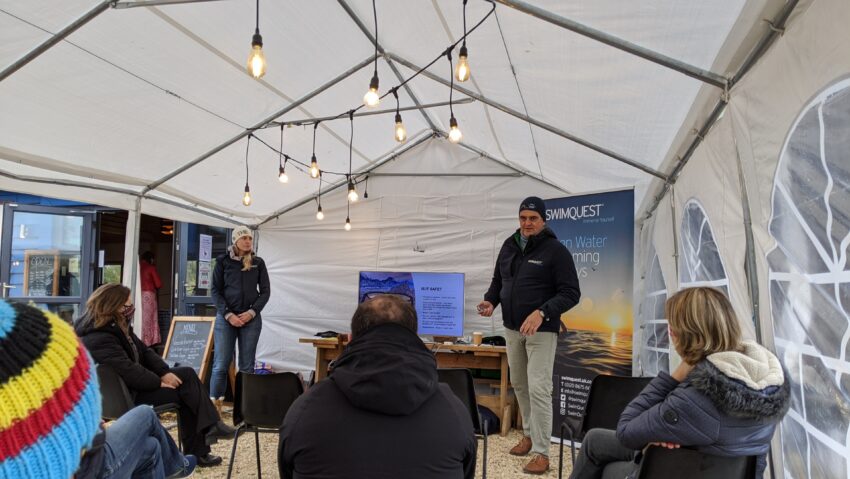
Understanding the dangers of cold water shock
Our editorial assistant and rookie cold water swimmer experiences cold water shock for the first time
If you have ever read up on how to safely swim outside in winter, you will have inevitably come across the term “cold water shock”. It’s the theory that when you submerge yourself in cold water, a fight-or-flight response is triggered in your body due to the perceived danger of the cold. This manifests as an initial gasp, followed by rapid, uncontrollable breathing and an increase in heart rate and blood pressure.
Having worked for Outdoor Swimmer for just shy of a year now, I am familiar with what cold water shock is and in theory how to combat it. As such, when it came to my first ‘real’ cold water skins swim at Queensford Lake in Oxford last weekend, despite having never actually experienced cold water shock before, I figured I would be able to easily overcome it if it were to happen to me.
In reality, things panned out a little differently.
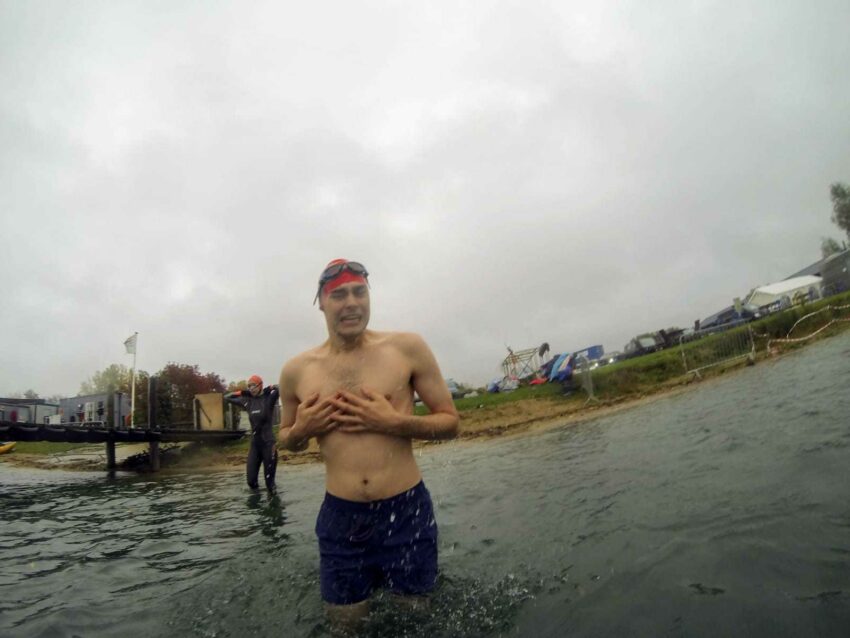
Having previously only swam in winter with the protection of a thermal wetsuit, I recently thought it would be a good idea to experience the supposed life-affirming pleasures that cold water skins swimming has to offer.
So I signed up to a winter swimming seminar and swim held by two experts in cold water swimming, co-founders of SwimQuest Swimming Holidays, Alice Todd and John Coningham-Rolls – who is also the Vice President of the International Winter Swimming Association (IWSA).
As a beginner to winter swimming, the seminar proved to be a really useful experience and I would encourage any prospective winter swimmers to attend something similar if you have the opportunity to. Whether you plan to swim in skins or a wetsuit, or with a few neoprene accessories, the seminar took us through all you could possibly want to know about cold water: from the history of winter swimming, to what kit to take, and a breakdown of what to do before, during and after you’re in the water.
As a beginner, it was comforting to hear about the contemporary history of winter swimming in Scandinavia. It definitely rationalised any fears I had about the swim I was about to do. It’s quite a new thing here, but cold water swimming has a long history in Europe. You hear a lot about the mental health benefits of cold water in the UK, but there are so many other, more universal benefits too that are yet to be realised in quite the same way. For example, in Scandinavia there’s a strong link culturally between winter swimming and public health.
Another important takeaway from the session was understanding the importance of getting into the water as quickly as possible from when you undress. The moment you start removing your warm, dry clothes, your body starts to cool from exposure to the cold, so it’s in your own interest to just get in quickly!
There were a heap of useful tips like this, all of which you can find in our section for cold water swimming. For me though, the most important thing I took away from the session was actually the swim after it, when I was able to put into practise what I had just learnt.
I mentioned before that I already had some knowledge of cold water shock – the seminar went over a lot of this theory: knowing what to expect; knowing its normal to be out of breath; knowing it will only last for 30 seconds; trying to control your stroke; to splash your face and wrists with cold water before getting in; to keep moving; to stay calm etc.

With this new and refreshed knowledge, it was then time for the swim. Standing at the edge of the 12-degree water in only my shorts, goggles and swim hat, I was naturally nervous, but with all this safety advice at the forefront of my mind, I was confident in my ability to stand up to the cold.
I waded in to about waist-deep, splashed my face and torso, then submerged my body into the water. Then, as I had anticipated, I experienced cold water shock. My breathing increased rapidly, my heart began beating fast and my chest became extremely tight. Despite everything I knew, I began to panic and I couldn’t breathe.
Even though I was aware of what to do and I had anticipated exactly how I might react, I still had to fight hard to overcome my body’s response to the cold. When your heart rate is that high and you are struggling to breathe, it’s difficult to stay rational. I was lucky that I was in the right company during the swim and had that as a sort of comfort blanket over the whole experience, yet even so, I still struggled to control my breathing. I could breathe in, but exhaling proved to be really difficult.
I soon overcame it, but I can completely appreciate the seriousness of cold water shock now I’ve experienced it first-hand. As an inexperienced cold water swimmer, if I had dived in with my head under the water and with those initial gasps I took, I can see how I could have risked drowning. 12-degrees is cold for a beginner, but temperatures in the UK get far colder in the middle of winter.
After my first experience of cold water shock, what I’d say is that it’s important to understand that cold water swimming is dangerous. But it really shouldn’t put you off doing it. If you know beforehand how to do it safely and how to combat cold water shock, then once you’re past the first 30 seconds or so, I guarantee you’ll have a great time. Just make sure you’re never alone when you swim in cold water and that if you are thinking about getting into it, to read up on the risks or even better attend a winter swimming seminar.
Keen to book a winter swimming safety session for your swim group or lake? Get in touch with John or Alice by emailing info@swimquest.uk.com or call 07825 301443.






